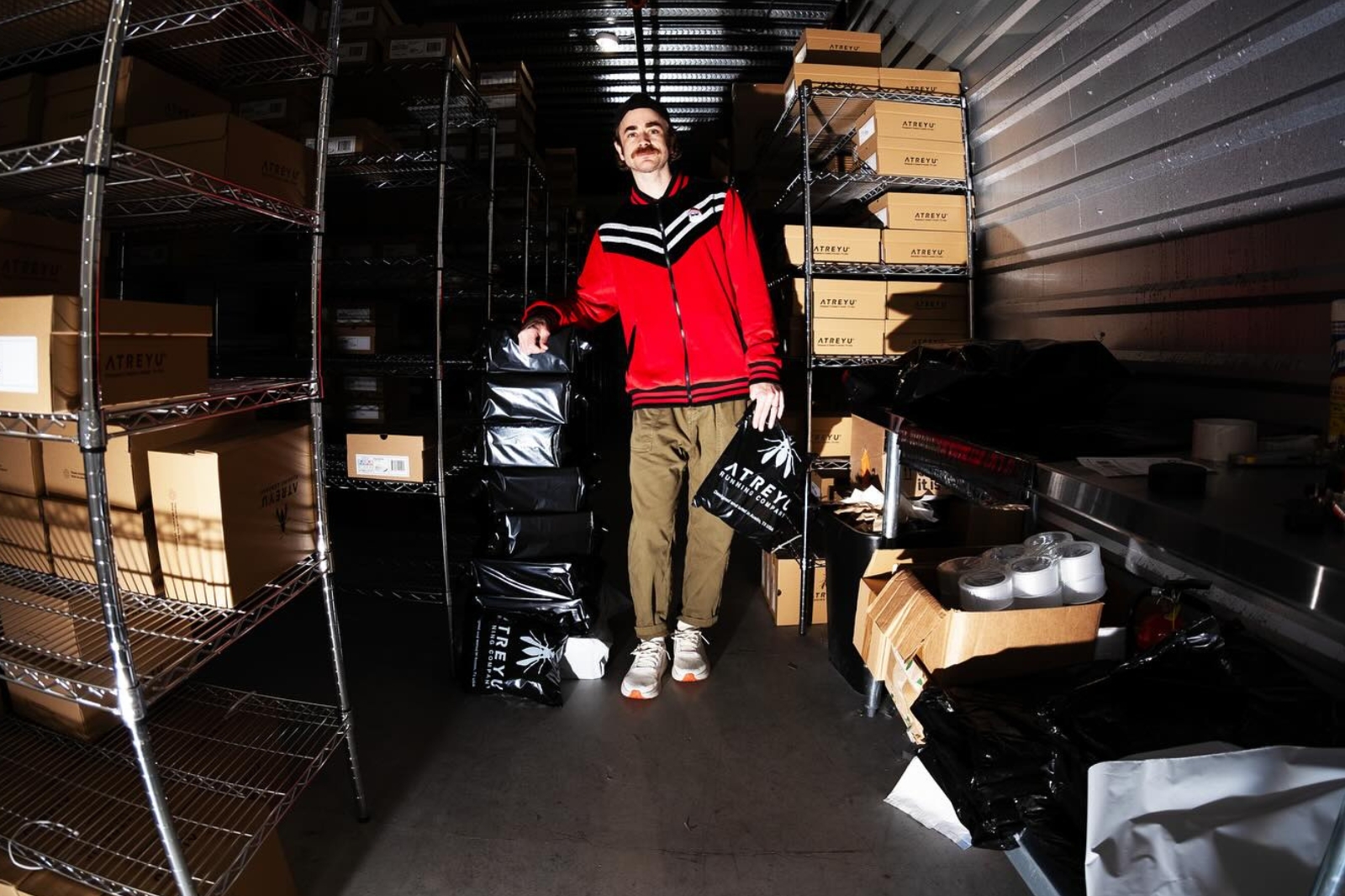
How tariffs are affecting small footwear brands within the running industry
Production in China and Vietnam (and lack of it in the U.S.)
Atreyu Running founder Michael Krajicek and Speedland co-founders Dave Dombrow and Kevin Fallon
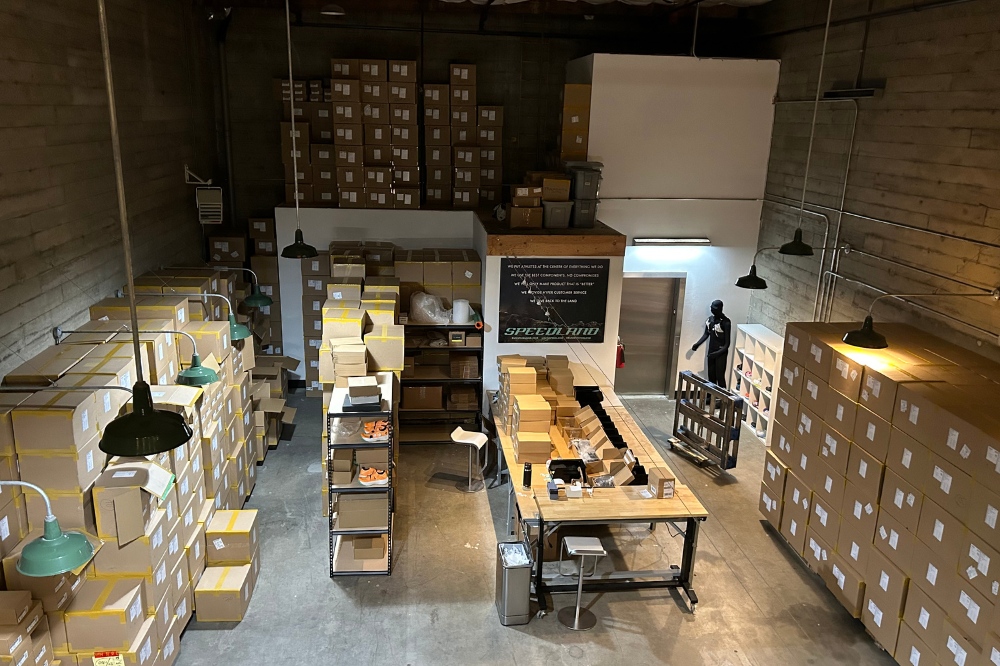
The offices, design studio, and distribution hub of Speedland, a performance running brand based out of Portland, Oregon
It took five years for Michael Krajicek to figure out his running shoe brand, and one Liberation Day to throw it into chaos.
As the owner of Atreyu Running, Krajicek is an anomaly in the running footwear world, a space dominated by giants like Nike, Adidas, and Brooks. His small start-up is a one-man show, as he handles everything from product design to social media to customer service for the brand. This includes shipping out each individual pair of shoes, those assemblies of foam midsoles and rubber outsoles and mesh uppers for which he’s risked his whole livelihood and spent sleepless nights over.
“It’s been something I have literally crawled across glass for, for years, every day, and have given up everything for,” says Krajicek from his Austin, Texas, home base. “And it’s weird to even think about it. Like, hey man, if nothing changes, this train is off the tracks for sure.”
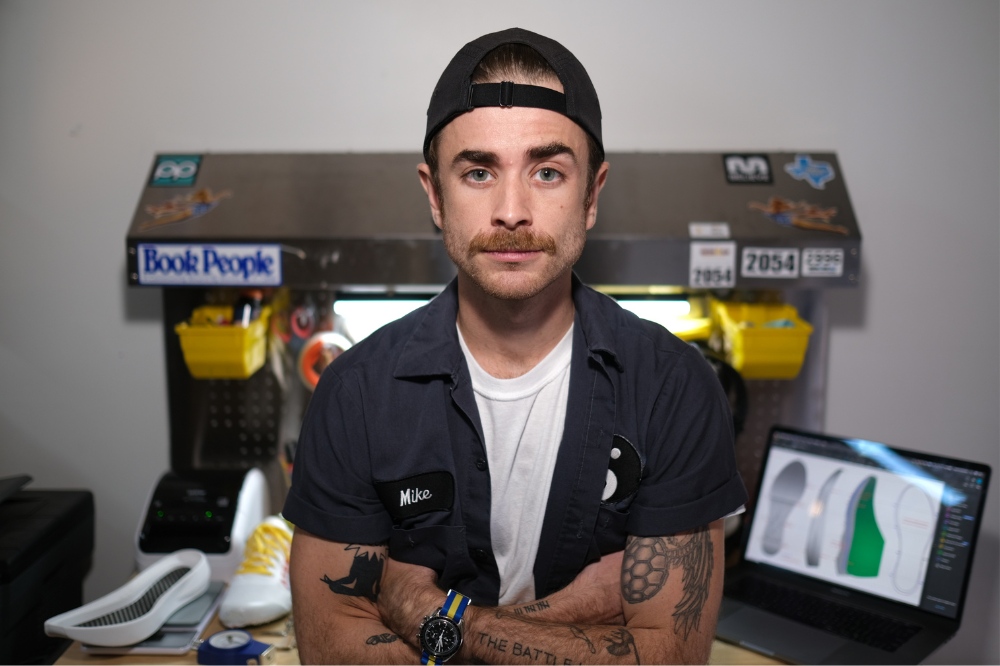
Atreyu Running founder Michael Krajicek
In the month since President Trump announced sweeping tariffs – including a 145% fee on certain goods made in China – those responsibilities that make up the 24/7 lifecycle of a solo entrepreneur have slowed to a crawl.
“I’m on a forced sabbatical at this point,” says Krajicek, who was able to land the spring launch of his latest model – the Daily Trainer 2.0 – before the tariffs hit, but has now put an indefinite pause on the development and release of his upcoming fall 2025 model.
That’s because all of Atreyu Running footwear is made in China, one of two primary countries in which performance footwear is manufactured. Vietnam is the other, which is currently on a 90-day pause from the 46% tariffs levied against it on April 9 by the Trump administration. China’s tariffs, however, remain in full effect.
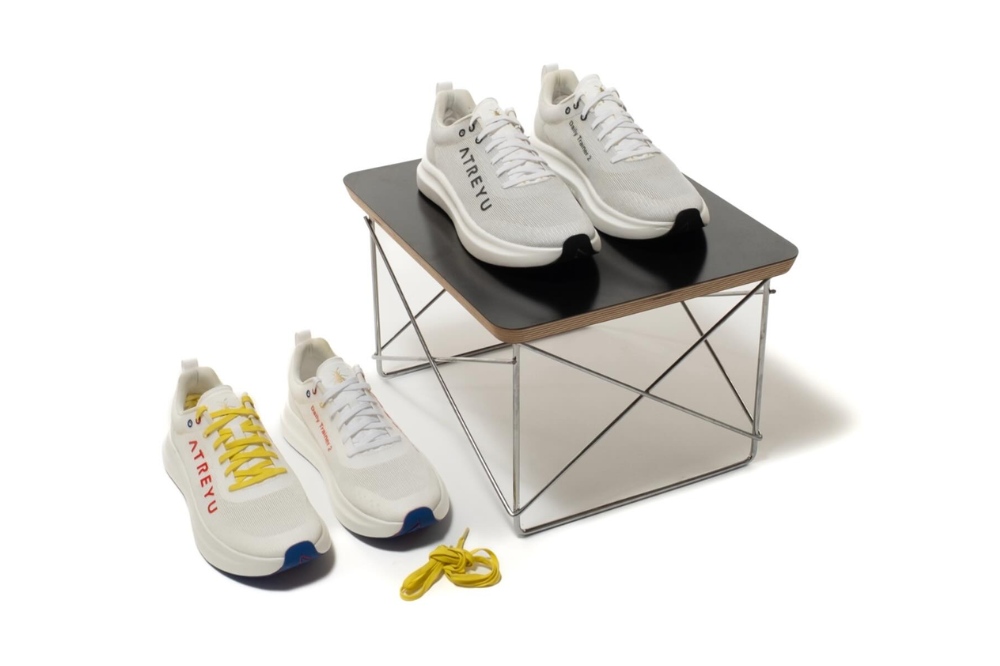
Atreyu Daily Trainer 2.0
When the tariffs came down last month, the effect was swift and certain for brands like Atreyu Running with manufacturing bases inside China’s borders. Overnight, a shoe that cost $40 from the factory floor to the U.S. shore could now see that figure soar to $100, and that’s before distribution to a local running store or online shop. For smaller brands, they’d effectively have to sell 75% of their inventory on a run of shoes just to break even on production costs. In effect, an impossible path forward. Even at Vietnam-level tariffs, small brands would have to raise prices by significant amounts, while even larger brands would struggle to please both consumers and investors.
The large brands, however, do have certain advantages. In the current holding pattern, some of them are able to warehouse inventory offshore in the hopes that the tariff winds blow over. They can also extend longer lines of credit and financing on current and future orders, while smaller brands often have to pay up-front production costs. Then there’s the most important piece of the puzzle – the actual factory space.
The behemoth brands in the running footwear space had begun to shift their manufacturing away from China long before even the first Trump presidency. Nike, Puma, Under Armour, and others had all opened factories in Vietnam and Indonesia dating back to the late aughts on account of lower labor costs and supply chain diversification, all in anticipation of a potential trade war between the U.S. and China. Today, over half of all Adidas and Nike footwear is made in Vietnam, while China’s share has declined precipitously.
However, China retains decades of expertise and craftsmanship in the footwear industry, making it an ideal manufacturing locale for newcomers in the footwear space. For start-up brands like Atreyu Running, Chinese factories are not just the easiest launchpad for turning out a viable product, but really the only path forward for a brand without private equity to gain access to the most cutting-edge materials and deliver a reasonably priced shoe with high standards of quality.
While Vietnam is accessible with the right connections, China’s factories are generally more open to taking and producing smaller orders (i.e., less than 2,500 unit runs). When combined with a smoothed-out supply chain and lower labor costs, China offers an unmatched ecosystem for start-ups looking to pave a path towards viability.
Krajicek is quick to point out that he wishes he could manufacture in America. He’s looked into it extensively, but to make performance running footwear in this country is essentially a fool’s errand. Between the cost of labor, the price of materials, the development of said materials, and the utter absence of expertise and factory space, it’s virtually an impossible task, especially at scale. If a final product even managed to emerge, to make a shoe in America would deflate the consumer’s wallet in quick order, as the final retail price would balloon into the hundreds of dollars.
“Why don’t we leave manufacturing to the manufacturing experts?” questions Krajicek. “Because I don’t think that the bigger companies are claiming to be manufacturing experts. They’re design experts, they’re research-oriented, they’re scientists, they’re engineers. And I’m not saying we shouldn’t manufacture, I’m just saying [other countries] are our experts [in the footwear space]. So why would we even think that it’s a good idea to start on something we never really did in the first place?”
Kevin Fallon and Dave Dombrow, co-founders of Speedland, a performance footwear brand based out of Portland, Ore., agree. They point out that China has the infrastructure and subsidies in place to make the latest and greatest components for running footwear, something that is nonexistent in the United States.
“One of my favorite quotes is when Dave Chappelle said: ‘We want to wear Nikes, not make them,’” says Fallon, reflecting our reliance on foreign labor and the lack of manufacturing focus within the U.S.
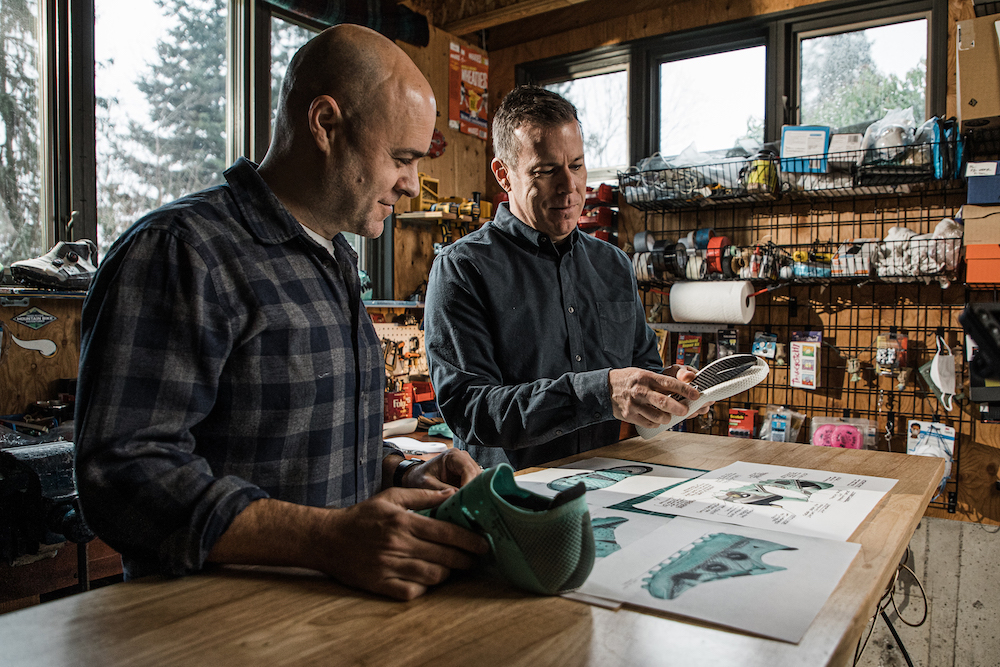
Speedland co-founders Dave Dombrow (left) and Kevin Fallon (right)
Because of that disparity, factories in China do what we cannot: quickly adapt to changes within the industry as a result of new innovation or cultural trends, a huge advantage to smaller footwear brands. A prime example of this is the current emphasis on shoe midsoles made with supercritical foaming, a process that provides a lightweight, bouncy, and durable material that has quickly replaced many of the standard EVA midsoles found in running shoes over the past decade.
“Everybody in Asia is ramping up on making supercritical foams and that requires big autoclaves, high pressure systems, and things we don’t have [here in America],” notes Fallon. “So yeah, you set up a factory to do supercritical foams and four years from now there’s a new foaming technology that makes all of that obsolete, and now what are you going to do?”
Fallon highlights past trends in running footwear, like the heavy emphasis on knit uppers when Nike went all-in on Flyknit in the mid-2010s and other brands followed suit. Once thought of as the future of uppers, brands eventually moved to lighter and more breathable mesh. While knit still has a place, it’s often a secondary choice in running footwear used to save costs. “There’s warehouses with football fields worth of knitting machines sitting empty with cobwebs on them. We’ve seen it,” says Fallon.
Because of the fast-paced nature of running footwear, including constantly evolving materials and seasonal styles, it’s nearly impossible to institute an automated process in the U.S. Unlike a cell phone or automotive part, there’s too much variance between models and zero infrastructure to support the ever-changing nature of the running shoe market. “Every brand has tried to do it in the U.S.,” says Dombrow. “Every brand – including every big brand – has failed.”
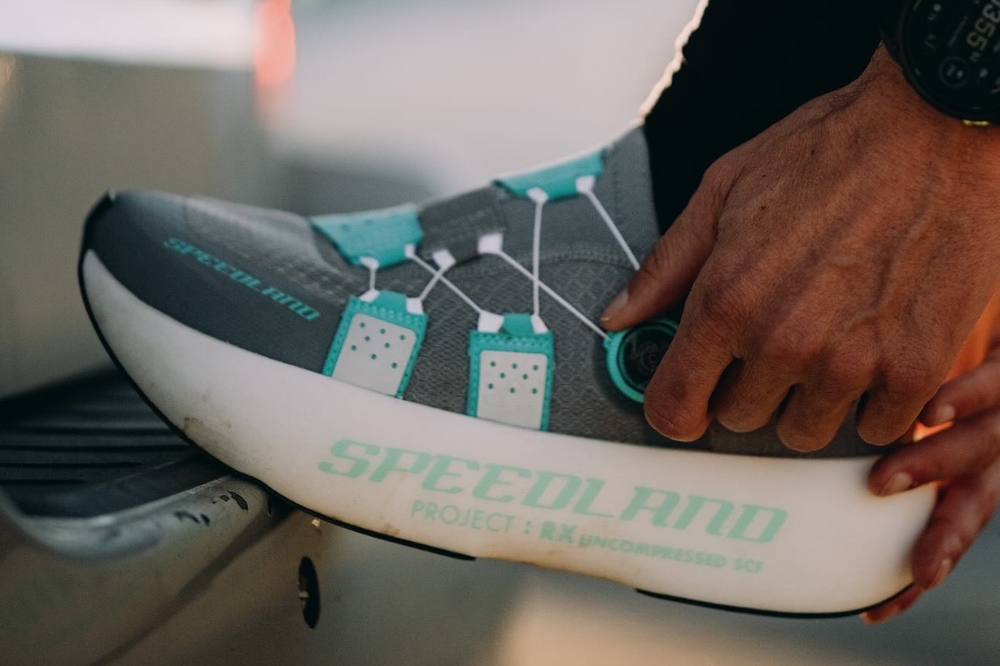
Speedland RX:FPY
While advances in AI and robotics lay out a potential path forward, it remains a long-distance goal that requires somebody to take charge. Whether that’s through government subsidies or a brand like Nike or Adidas spearheading the shift, it will still be a Herculean task that nobody seems willing to take on in the current economic and political climate.
That’s not to say it’s not desired. “I think the idea of having more manufacturing in the U.S. is a good thing, honestly,” says Dombrow. “Like, that’s actually a positive. It’s just, is the footwear industry the one to lead that charge? The answer is no.”
In the meantime, to brands like Atreyu Running and Speedland, it seems uniquely punitive to hand down tariffs as blunt instruments primarily felt by small businesses within the space. Especially as exemptions are simultaneously doled out to large auto companies, with additional considerations rumored in spaces that could benefit tech giants like Apple and NVIDIA. For now, it’s a wait-and-see game.
“I’m going to have to wait for this to pass. And then I’m going to have to feel confident about putting myself, my family at risk again, because here’s the other side of the coin: I’ve stared down the barrel of lines of credit before and I’ve always felt very confident because I’m in charge, I’m gonna get it done, I’m gonna stay up all night long … I’m gonna ship the shoes,” says Krajicek. “But this is a new feeling to where I don’t feel confident with risk because I can’t mitigate or manage the risk myself.”
The overall sentiment in the performance footwear space is that brands both big and small are hoping the storm is a squall and not a hurricane, that the tariffs are being used as a negotiation tactic, and that exemptions are made or subsidies provided for industries with reliance on foreign infrastructure.
“It’s exemptions for small businesses, exemptions for companies that do not have the ability to produce here,” says Krajicek. “And let’s keep an open and honest dialogue about what the future could hold because that’s what we do best. We engineer, we iterate, we do all the great things. Let’s keep that motivation.”
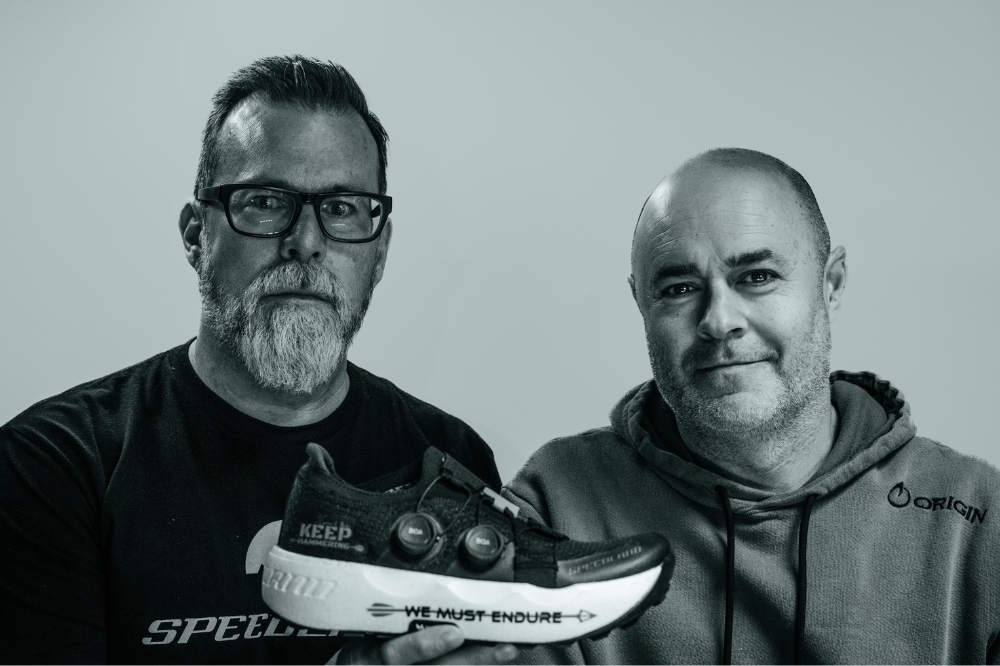
Fallon and Dombrow holding the Speedland GS:SFD trail model
Have something to say? Leave a Comment

Robbe is the senior editor of Believe in the Run. He loves going on weird routes through Baltimore, finding trash on the ground, and running with the Faster Bastards. At home in the city, but country at heart. Loves his two boys more than anything. Has the weakest ankles in the game.
More from Robbe
Great work, good reporting!
Thanks dude!
Nice piece. Thanks for shining a light on this.
Excellent article. Bringing shoe production home to the US not practical. Impact of tariffs increasingly to be felt as pre-tariff inventory levels fall across many products. Consumers not fans of inflation.